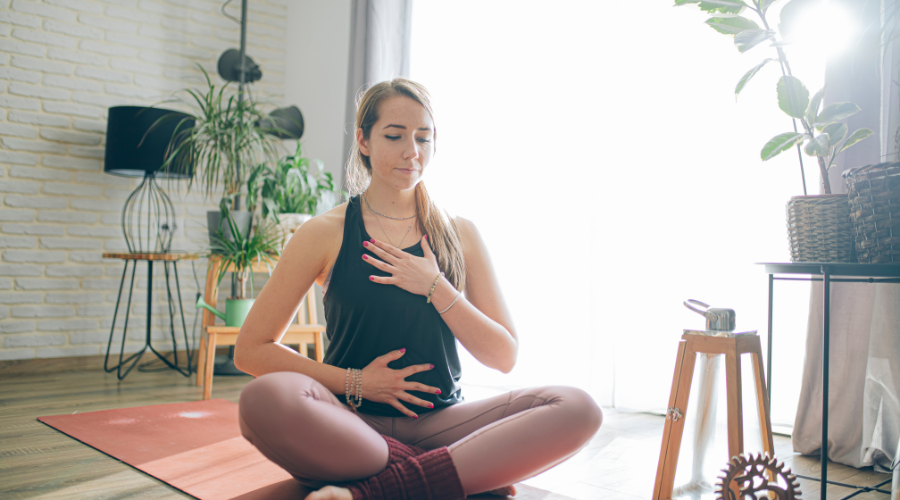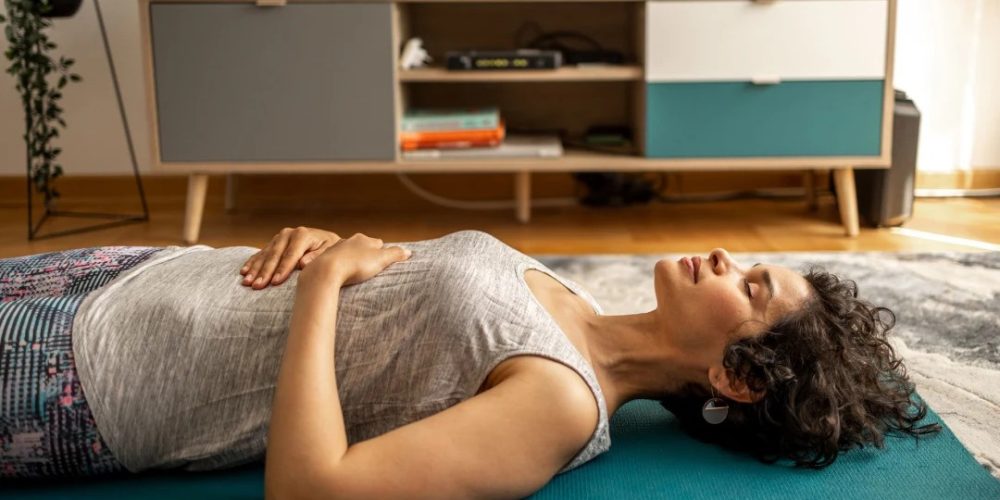What’s one simple thing you can do anytime, anywhere that is scientifically proven to reduce your stress level, improve your mood, and make it easier for you to concentrate? A breathing exercise. Scientists have shown that by slowing and controlling your breath, and in particular, making your exhalations longer than your inhalations, you can automatically slow your heartbeat. And doing a breathing exercise for 60 seconds is long enough to achieve these benefits.
Health.com recently put together a list of nine breathing techniques for reducing anxiety. I’ve tried most of them myself, among many others. Any of them should create a feeling of calm and clear your mind to help you tackle a workplace crisis or ace an important presentation. Here’s a closer look at the four that I find most effective.
1. Box Breathing
Box breathing is often taught and used in the U.S. military, probably because it’s one of the simplest breathing techniques to learn and remember, and it’s easy to do in almost any setting. To do box breathing, inhale for a count of four, hold your breath at the top of the inhale for a count of four, exhale for a count of four, and hold your breath at the bottom of the exhale for a count of four. Repeat for 30 to 60 seconds. As with all these exercises, you should only use box breathing briefly. For maximum effect, practice it once a day.
Like most of these techniques, box breathing works because it forces you to focus on your breathing, slow it down, and control it. Doing that will slow your heartbeat and increase your sense of calm. If you’re not sure about trying a breathing technique or you want something very easy to do, box breathing is a great place to start.
2. 4-7-8 Breathing
Andrew Weil, MD first popularized 4-7-8 breathing in the United States. The technique is based on the yoga practice of pranayama, or breath control. Weil says it’s more effective than medication at controlling anxiety, that it can improve digestion over time, and that it can cure insomnia. I can attest to that last claim–4-7-8 breathing is one of my go-to responses when I’m having trouble falling asleep.
It’s the most elaborate of the techniques here. But that’s still not very elaborate, and 4-7-8 breathing is well worth the trouble to learn. Here’s how to do it:
Step 1. Exhale all the air in your lungs with a whooshing sound.
Step 2. Place the tip of your tongue on the roof of your mouth, right at the spot where the ridge of flesh meets your two upper front teeth. Keep it there throughout the entire exercise, even when exhaling.
Step 3. Breathe in through your nose for a count of 4. Hold your breath for a count of 7. Exhale through your mouth with a whooshing sound for a count of 8. If holding your breath for a count of 7 or exhaling for a count of 8 seems difficult, then speed up the count but keep the proportions the same.
Repeat steps 1-3 a total of four times.
Weil recommends no more than four repetitions of this technique for most people. If you’ve been practicing it for a long time, and you want to do more, you can increase it to up to 8 repetitions, but that’s the maximum. If you want to increase the effect of the exercise, do that by slowing the count rather than adding repetitions.
He also recommends using the technique twice a day, and practicing it for four to six weeks before you try using it as a sleep aid. But many people, including me, have used it successfully to fall asleep with much less practice than that.
3. Diaphragm Breathing

If you’re an actor, a singer, or a speaker, you may already know how important it is to expand your diaphragm while breathing in, which allows you to fill your lungs more completely, give you greater breath control, and help you project so that you can be heard better.
Even if you’re not a performer or speaker, it’s worth giving diaphragm breathing a try, because it’s been shown in multiple studies to trigger a relaxation response, making it a great way to fight stress.
The key to diaphragm breathing is to make sure that you are fully expanding your abdomen as you breathe in. I find the easiest way to make sure of this is to rest my hands on my abdomen while either sitting or lying down. Here’s how to do it:
Breathe in completely through your nose, making sure to expand your diaphragm and pull as much air as you can deep into your lungs. Exhale slowly and completely through either your nose or mouth, feeling your diaphragm contract again. Repeat for a few rounds.
4. Long Exhales
This is an extremely simple technique, but incredibly helpful for reducing stress and making you feel calm. The most important thing about this technique is to make your exhales longer than your inhales. Because your heartrate rises when you inhale and slows when you exhale, you are basically hacking your nervous system to slow your heart rate and make you feel more relaxed when you breathe this way.
It can be as simple as this: Inhale deeply to a count of 4, then exhale to a count of 6. As you repeat this a few times and you feel more calm, you can increase the count, for example inhaling to a count of 6 and exhaling to a count of 8. Or, you can simply start counting more slowly.
A few rounds of slow breathing with longer exhalations than inhalations will be enough to give you a feeling of calm. But if you want to do something just a bit fancier, try cyclic sighing as recommended by Health.com. Inhale through your nose slowly, filling your lungs halfway. Pause for a moment, then fill your lungs the rest of the way with a second breath. Exhale slowly through your mouth, making sure that your exhalation lasts longer than your two inhalations did.
There’s a growing audience of Inc.com readers who receive a daily text from me with a self-care or motivational micro-challenge or tip. Often, they text me back and we wind up in a conversation. (Want to learn more? Here’s some information about the texts and a special invitation to an extended free trial.) For many of them, as for most everyone, stress an anxiety have become an unwelcome feature of daily life. When stress and anxiety come for you, these simple breathing techniques can be an effective way to fight back.


